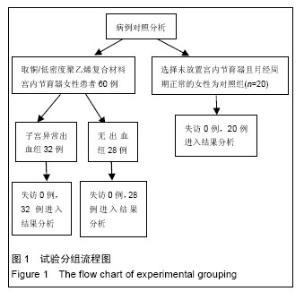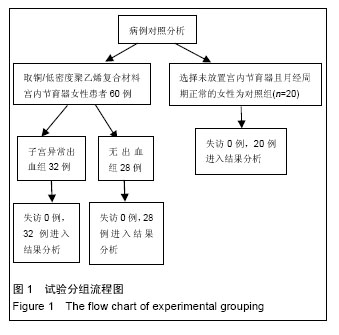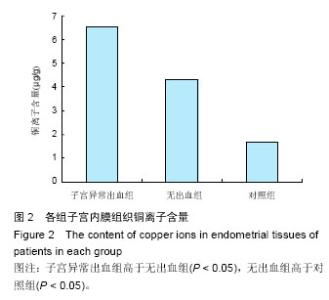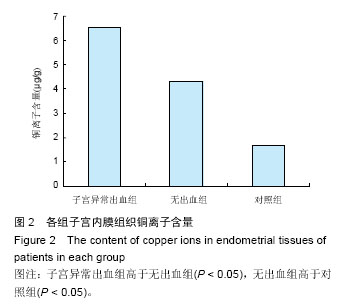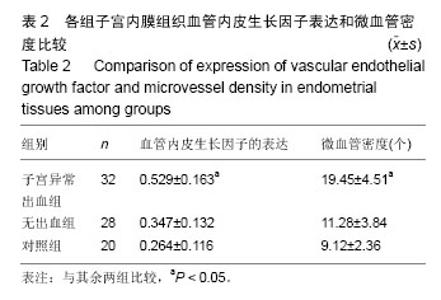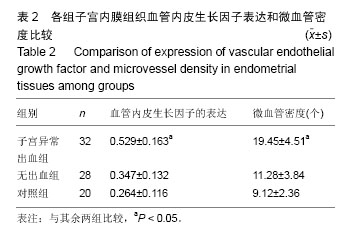| [1] 范光升.宫内节育器历史回顾[J].中国计划生育学杂志, 2009,17(4):251-252.
[2] 王洪.铜、银和锌作为宫内节育器活性物质的历史回顾与发展前景[J].华中科技大学学报:医学版, 2014,43(3): 364-367,370.
[3] 邓婷,周勤.左炔诺孕酮宫内缓释系统在妇科中的应用研究进展[J].实用医院临床杂志,2010,7(3):115-118.
[4] Achilles SL,Chen BA,Lee JK,et al. Acceptability of randomization to levonorgestrel versus copper intrauterine device among women requesting IUD insertion for contraception.Contraception. 2015; 92(6): 572-574.
[5] Beltran-Garcia MJ,Espinosa A,Herrera N,et al.Formation of copper oxychloride and reactive oxygen species as causes of uterine injury during copper oxidation of Cu-IUD. Contraception. 2000;61(2):99-103.
[6] Xue H,Xu N,Zhang C.Effect of stainless steel on corrosion behavior of copper in a copper-bearing intrauterine device.Adv Contracept.1998;14(2): 153-160.
[7] 闫丽华,孙涛,宋永昌,等.宫内节育器与子宫异常出血的关系分析[J].中国妇幼健康研究,2011,22(5):648-649.
[8] 轩华敏.放置宫内节育器后引发子宫出血的治疗分析[J].当代医学,2011,17(8):114-115.
[9] 王玎,颜素华.416例放置宫内节育器(IUD)出血的相关因素探讨[J].现代预防医学,2010,37(23):4446-4447.
[10] 张婕.宫内节育器致出血416例相关因素分析[J].临床和实验医学杂志,2008,7(3):57-58.
[11] 赵璐,殷震惠,杨华.血管内皮生长因子及相关因子与含铜宫内节育器致子宫异常出血的关系[J].国际妇产科学杂志,2014,41(4):477-480.
[12] 辛志敏,徐滨,孙莹璞,等.宫内节育器对大鼠子宫内膜血管内皮生长因子及其受体表达影响的研究[J].现代妇产科进展,2006,15(7):534-537.
[13] 王树云,杨朝菊,潘红梅,等.模拟宫腔液中葡萄糖对铜腐蚀的影响[J].疑难病杂志,2015,14(5):529-531.
[14] 曹变梅,奚廷斐.不同含铜宫内节育器在模拟宫腔液中的铜离子释放研究[J].中国药事, 2012,26(1):22-24, 34.
[15] Gu XY,Wang X,Guo LN.The related study of first pregnancy women with Cu-IUD on copper content of blood serum and decidua, chorion tissues.Zhonghua Yi Xue Za Zhi. 2012;92(5):324-326.
[16] Wu J,Wang L,He J,et al.In vitro cytotoxicity of Cu²?, Zn²?, Ag? and their mixtures on primary human endometrial epithelial cells.Contraception. 2012;85(5): 509-518.
[17] Jinying L,Ying L,Xuan G,et al.Investigation of the release behavior of cupric ion for three types of Cu-IUDs and indomethacin for medicated Cu-IUD in simulated uterine fluid. Contraception. 2008;77(4): 299-302.
[18] De la Cruz D,Cruz A.Blood copper levels in Mexican users of the T380A IUD. Contraception. 2005;72(2): 122-125.
[19] Kar AB,Engineer AD,Goel R,et al.Effect of an intrauterine contraceptive device on biochemical composition of uterine fluid.Am J Obstet Gynecol. 1968;101(7):966-970.
[20] 李丽,刘效群,王树松.放置含铜IUD后异常出血者子宫内膜组织铜离子浓度和血管内皮生长因子表达关系的研究[J].中国计划生育学杂志,2011,19(3):142-144.
[21] Klein V,Müller K,Schoon HA,et al.Effects of Intrauterine Devices in Mares: A Histomorphological and Immunohistochemical Evaluation of the Endometrium. Reprod Domest Anim.2015.[Epub ahead of print]
[22] Murakami K,Lee YH,Lucas ES,et al.Decidualization induces a secretome switch in perivascular niche cells of the human endometrium.Endocrinology. 2014; 155 (11):4542-4553.
[23] Xin ZM,Xie QZ,Cao LM,et al.Effects of intrauterine contraceptive device on expression of vascular endothelial growth factor, kinase insert domain-containing receptor and microvessel density in endometrium.Zhonghua Fu Chan Ke Za Zhi. 2004; 39(11):771-775.
[24] Möller B,Rönnerdag M,Wang G,et al.Expression of vascular endothelial growth factors and their receptors in human endometrium from women experiencing abnormal bleeding patterns after prolonged use of a levonorgestrel-releasing intrauterine system. Hum Reprod.2005;20(5):1410-1417.
[25] 刘小乐,杜天竹,陈衡,等.置Cu-IUD有或无子宫异常出血者血管内皮生长因子的表达[J].广东医学院学报, 2005,23(4):403-405.
[26] 尹玖.置宫内节育器子宫异常出血与血管内皮生长因子表达的关系[J].华中医学杂志,2004,28(1):41-42.
[27] McAuslan BR,Gole GA.Cellular and molecular mechanisms in angiogenesis. Trans Ophthalmol Soc U K.1980;100(3):354-358.
[28] McAuslan BR,Reilly W.Endothelial cell phagokinesis in response to specific metal ions.Exp Cell Res. 1980; 130(1):147-157.
[29] Hannan GN,McAuslan BR.Modulation of synthesis of specific proteins in endothelial cells by copper, cadmium, and disulfiram: an early response to an angiogenic inducer of cell migration.J Cell Physiol. 1982;111(2):207-212.
[30] Feng W,Ye F,Xue W,et al.Copper regulation of hypoxia-inducible factor-1 activity. Mol Pharmacol. 2009;75(1):174-182.
[31] Visconti RP,Richardson CD,Sato TN.Orchestration of angiogenesis and arteriovenous contribution by angiopoietins and vascular endothelial growth factor (VEGF). Proc Natl Acad Sci U S A. 2002;99(12): 8219-8224.
[32] Miller KD,Chap LI,Holmes FA,et al.Randomized phase III trial of capecitabine compared with bevacizumab plus capecitabine in patients with previously treated metastatic breast cancer.J Clin Oncol. 2005;23(4): 792-799.
[33] Teknos TN,Islam M,Arenberg DA,et al.The effect of tetrathiomolybdate on cytokine expression, angiogenesis, and tumor growth in squamous cell carcinoma of the head and neck. Arch Otolaryngol Head Neck Surg.2005;131(3):204-211.
[34] 杜天竹,黄晓慧,罗新,等.诱导型一氧化氮合酶、血管内皮生长因子对置铜宫内节育器妇女子宫内膜微血管生成的影响[J].实用预防医学,2012,19(1):13-16.
[35] 陈素琴,范秀华,尹桂然,等.放置IUD出血子宫内膜中血管内皮生长因子及CD34含量的研究[J].中国妇幼保健, 2006, 21(3):390-393.
[36] 辛志敏,孙莹璞,苏迎春,等.置铜宫内节育器前后子宫内膜微血管密度及VEGF检测[J].郑州大学学报:医学版, 2006, 41(3):533-534.
[37] 刘小乐,杜天竹,陈衡,等.Cu-IUD有或无子宫异常出血者血管内皮生长因子的表达[J].广东医学院学报, 2005, 23(4):403-405. |
